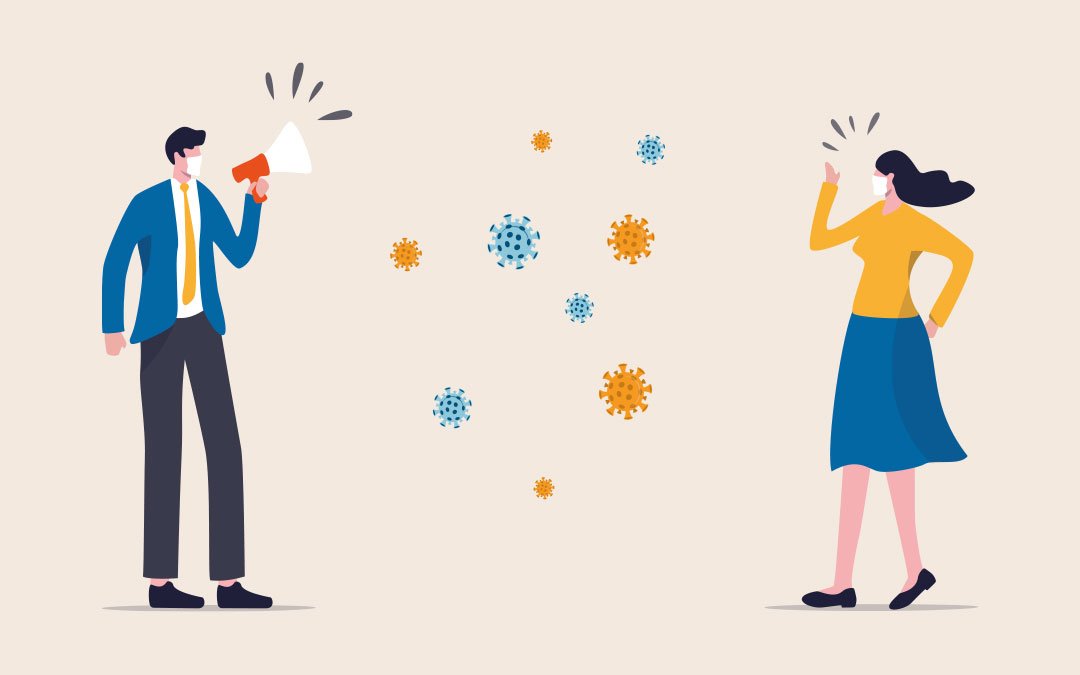Social distancing, physical distancing, is there a difference? These two terms are in use everywhere around you. You may be confused, but the answer is simple. The two terms are fully interchangeable. What do they mean and why are they so important?
A resource from the government of Canada says this on social distancing. They are measures taken to minimize close contact with others in the community, including quarantine and self-isolation at the individual level as well as other community-based approaches such as:
- Avoiding crowding
- School measures and closures
- Workplace measures and closures
- Public/mass gathering cancellations
Individuals must follow quarantine and self-isolation recommendations properly to prevent transmission of COVID-19 to others in the home setting or the community.
It’s this simple: keep yourself away from others to help prevent the spread of COVID-19. Whether you call it social distancing, physical distancing, or isolation, it should all mean the same thing: avoid in-person interaction with others.
Why, though, is social distancing so necessary? It comes down to math.
[/et_pb_text][/et_pb_column][/et_pb_row][et_pb_row admin_label=”Heading: With No Social Distancing (H2)” _builder_version=”4.4.2″][et_pb_column type=”4_4″ _builder_version=”4.4.2″][et_pb_text admin_label=”Heading Text” _builder_version=”4.4.2″ header_font=”||||||||” header_2_font=”|600|||||||”]With No Social Distancing
[/et_pb_text][/et_pb_column][/et_pb_row][et_pb_row column_structure=”1_3,2_3″ admin_label=”No Distancing Content” _builder_version=”4.4.2″][et_pb_column type=”1_3″ _builder_version=”4.4.2″][et_pb_image src=”https://menshealthfoundation.ca/wp-content/uploads/2020/04/social-distancing-blog_insets-0.png” align=”center” admin_label=”Infographic Snippet: No Distancing” _builder_version=”4.4.2″][/et_pb_image][/et_pb_column][et_pb_column type=”2_3″ _builder_version=”4.4.2″][et_pb_text admin_label=”Body Text” _builder_version=”4.4.2″]With no social distancing, one asymptomatic person, meaning they show no symptoms or have mild symptoms, can infect 2.5 people over five days.
Those 2.5 people then infect 2.5 people, and so on. Within a month, 245 or more could be infected.
After two months, the number of infected is 59,605, and by three months, it could be in the tens of millions.
[/et_pb_text][/et_pb_column][/et_pb_row][et_pb_row admin_label=”Heading: With a 50% Reduction (H2)” _builder_version=”4.4.2″][et_pb_column type=”4_4″ _builder_version=”4.4.2″][et_pb_text admin_label=”Heading Text” _builder_version=”4.4.2″ header_2_font=”|600|||||||”]With a 50% Reduction in Going Out
[/et_pb_text][/et_pb_column][/et_pb_row][et_pb_row column_structure=”1_3,2_3″ admin_label=”With a 50% Reduction Content” _builder_version=”4.4.2″][et_pb_column type=”1_3″ _builder_version=”4.4.2″][et_pb_image src=”https://menshealthfoundation.ca/wp-content/uploads/2020/04/social-distancing-blog_insets-50.png” align=”center” admin_label=”Infographic Snippet: 50% Distancing” _builder_version=”4.4.2″][/et_pb_image][/et_pb_column][et_pb_column type=”2_3″ _builder_version=”4.4.2″][et_pb_text admin_label=”Body Text” _builder_version=”4.4.2″]When an asymptomatic person limits social interactions by 50%, they can infect 1.25 people over five days.
By one month, that number of infected is 5. That’s 50 times less than no distancing.
After three months, it’s 50 or so infected. It’s a shocking difference to the tens of millions potentially infected with no social distancing.
[/et_pb_text][/et_pb_column][/et_pb_row][et_pb_row admin_label=”Heading: With a 75% Reduction (H2)” _builder_version=”4.4.2″][et_pb_column type=”4_4″ _builder_version=”4.4.2″][et_pb_text admin_label=”Heading Text” _builder_version=”4.4.2″ header_2_font=”|600|||||||”]With a 75% Reduction in Going Out
[/et_pb_text][/et_pb_column][/et_pb_row][et_pb_row column_structure=”1_3,2_3″ admin_label=”With a 75% Reduction Content” _builder_version=”4.4.2″][et_pb_column type=”1_3″ _builder_version=”4.4.2″][et_pb_image src=”https://menshealthfoundation.ca/wp-content/uploads/2020/04/social-distancing-blog_insets-75.png” align=”center” admin_label=”Infographic Snippet: 75% Distancing” _builder_version=”4.4.2″][/et_pb_image][/et_pb_column][et_pb_column type=”2_3″ _builder_version=”4.4.2″][et_pb_text admin_label=”Body Text” _builder_version=”4.4.2″]A 75% reduction is where the math plays out interestingly. At this level of social distancing, a person could infect 0.625 over five days. Since you can’t infect a portion of a person, you’re going to infect one person or 0. The chain of infection effectively ends.
With social distancing, we go from millions potentially infected over three months down to 50 or less. Pair distancing with some tried and tested prevention advice, and over time, we end the pandemic.
[/et_pb_text][/et_pb_column][/et_pb_row][et_pb_row admin_label=”Download Infographic” _builder_version=”4.4.2″][et_pb_column type=”4_4″ _builder_version=”4.4.2″][et_pb_image src=”https://menshealthfoundation.ca/wp-content/uploads/2020/04/social-distancing_full.jpg” alt=”COVID-19 The Importance of Distancing INFOGRAPHIC” title_text=”COVID-19 The Importance of Distancing” url=”https://www.canadian-mens-health-foundation.pantheonlocal.com/downloads/social-distancing-en.pdf” url_new_window=”on” _builder_version=”4.4.8″][/et_pb_image][et_pb_text _builder_version=”4.6.0″ hover_enabled=”0″ sticky_enabled=”0″][/et_pb_text][/et_pb_column][/et_pb_row][et_pb_row _builder_version=”4.4.2″][et_pb_column type=”4_4″ _builder_version=”4.4.2″][et_pb_text _builder_version=”4.4.2″]We must keep in mind that these numbers will vary from country to country and change as we gather more information daily. This infographic is an estimation based on what we know. What it does show, and what we do know is the power of social distancing. It works.
If we do our part to reduce the spread of COVID-19, we “flatten the curve.” As we flatten the curve, we protect ourselves and reduce the strain on hospitals and health care workers. Working from home (if you’re able) and limiting interaction with others will help end the pandemic. We don’t know how long this will take, but we are sure that distancing yourself from others will reduce your risk as well as the risk of others catching COVID-19.
So stay home for the sake of your families and your communities.
What do you do to practice social distancing? How has it affected your life? Share your experiences from the comments below.
[/et_pb_text][/et_pb_column][/et_pb_row][/et_pb_section]





